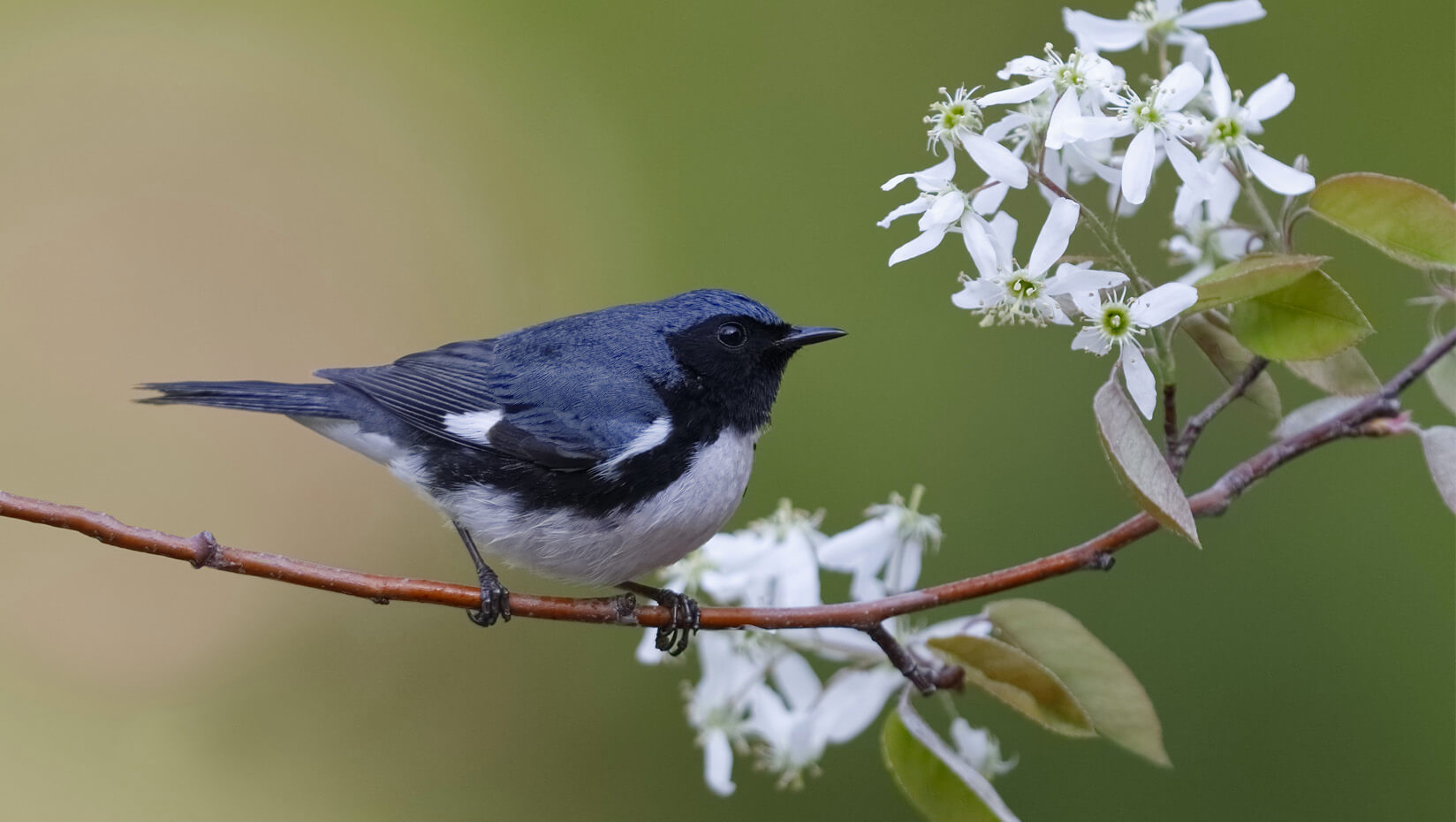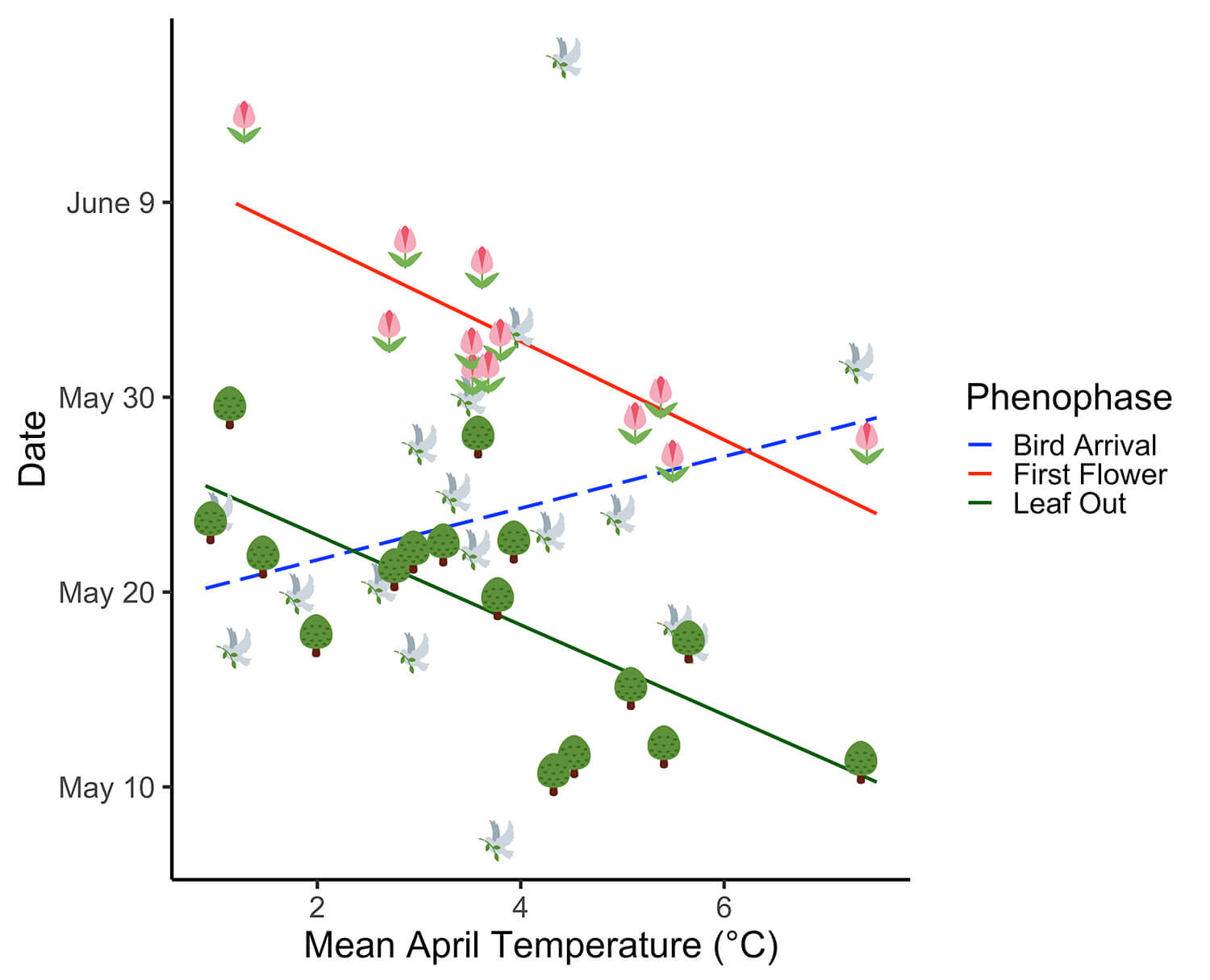
Migratory birds arriving earlier, but they’re not keeping pace with flowering, leaf-out
An Aroostook County man’s nature-based journal notes written in the mid-1900s are shedding light on ecological effects of climate change in understudied northern Maine.
L.S. Quackenbush’s daily entries provide evidence that migratory birds’ arrival dates in Oxbow, Maine may not be shifting fast enough to keep up with advancing leaf-out and flowering life cycles, says Caitlin McDonough MacKenzie.
This trophic mismatch — when the availability of food isn’t in sync with the demand for food — could be problematic for migrating birds, says the David H. Smith Conservation Research Fellow at the University of Maine.
Information in Quackenbush’s journals also indicate that plants in northern New England seem to be responding more slowly to warming spring temperatures, when compared to plants in southern New England.
“Leaf out and flowering are creeping earlier in warmer springs across the region, but the rate of advance seems to be slower in northern New England,” says McDonough MacKenzie, who has been studying phenology, or the timing of seasonal biological events like flowering and leaf out, in Maine since 2011.
“My Ph.D. adviser works in Concord, Massachusetts, so throughout my research I was always comparing my findings back to Concord. We have these incredible records of plant and bird phenology in Concord that dates back to Thoreau, so we can calculate how these species shift.
“My study species in Maine seem to be shifting slower than the observations from Concord. This could be an artifact of different data sources — we kind of take what we can get when it comes to historical records — but it could be a sign that something is different in the north.”
Quackenbush’s journals were recently rediscovered at the College of the Atlantic. McDonough MacKenzie has compared his 1940–1959 ecological data with migratory bird data recorded from 1993 to 2012.
While spring leaf-out has been extensively studied in southern New England, that’s not the case in northern New England, where the temperate deciduous forest — think four seasons — meets the transition with boreal forest — think hardy evergreens.
In addition to detailing migratory bird arrivals, leaf-outs and flowering cycles, Quackenbush, a hunting guide, documented the weather as well as ice on the Oxbow River behind his house in Oxbow. Oxbow is between Baxter State Park and Presque Isle.
The 2010 U.S. Census reported that 66 people lived there. Oxbow de-organized as a town in 2017, says McDonough MacKenzie, who found Quackenbush’s barn and house when she traveled to Oxbow in 2013.
According to Quackenbush’s notes, the average date of arrival of eight migratory bird species in the mid-1900s was May 23. Today it’s May 14.
Even though this date advanced, McDonough MacKenzie says the birds’ average arrival date did not correlate with mean spring temperatures.
Warmer spring temperatures, though, did impact leaf out and flower dates.

June 2 was the average first flower date for 15 species that Quackenbush observed. In Quackenbush’s journal, the average date of first flower moved ahead 2.5 days for each 1 degree C increase in mean April temperature.
May 19 was the average leaf-out date for 10 of Quackenbush’s observed plant species 1940–1955. Throughout Quackenbush’s observations in the mid-20th century, the average date of leaf out advanced 2.3 days for each 1 degree C increase in mean April temperature.
All across New England, there’s a clear trend of earlier flowering and leaf-out. But the date of arrival of migratory birds doesn’t seem to be shifting as consistently or rapidly.
McDonough MacKenzie says Quackenbush’s journal and other perhaps underappreciated sources of historical ecological data give ecologists the chance to rapidly assess changes in seasonal plant and animal life-cycle events.
His data also may help scientists better understand uneven plant and animal seasonal responses to warming across a community, as well as possible implications for competition, pollination, feeding interactions and, ultimately, community structure and stability.
“Advancing Leaf-Out and Flowering Phenology is Not Matched by Migratory Bird Arrivals Recorded in Hunting Guide’s Journal in Aroostook County, Maine” was published in Northeastern Naturalist.
Co-authors are Jason Johnston and Robert Pinette of the University of Maine at Presque Isle, Abraham Miller-Rushing of the U.S. National Park Service at Acadia National Park, William Sheehan of Woodland, Maine, and Richard Primack of Boston University.
Contact: Beth Staples, 207.581.3777, beth.staples@maine.edu
